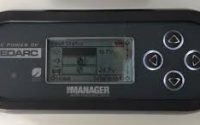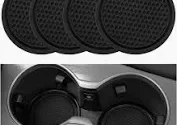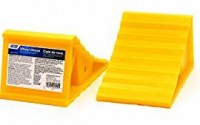Dinghy Trailer Hassle-free Towing
Dinghy trailer towing
How to establish a dinghy trailer electric system for risk-free, hassle-free towing. When you tow a vehicle behind a motorhome, you have to take into consideration that you’re basically treating the vehicle like a trailer. As well as it ought to function like one in order to make sure of risk-free, legal travel. In the last two installations of Dinghy Digest, we presented details on baseplates as well as tow bars that make hitching and pulling feasible. So currently it’s on to the next step: the electrical system.
The most typical means to do this is with a wiring harness that plugs/splices right into the rowboat car’s tail. And also brakelights and makes use of one-way diodes to prevent electric responses. In either example, the electrical wiring harness is transmitted to a receptacle placed at the front of the vehicle. As well as a particular power cable is plugged right into the dinghy and motorhome. In a comparable fashion to hooking a trailer to the tow lorry.
More Choice
Years ago, those were your just two choices. However today, there are even less complicated choices. Blue Ox, Demco as well as Hopkins Towing Solutions offer vehicle-specific circuitry harnesses for prominent lorries. These allow you to link into the factory harness, removing the demand for cutting and splicing. These same suppliers use in shape lists that make it simple to figure out if a vehicle-specific package is readily available for your application.

Over left, Demco supplies vehicle-specific plug-in electrical wiring kits along with Bulb Taillight Wiring and diode electrical wiring sets like this one. They use heat-sealed diodes to link the motorhome’s running lights, turn indicator and also brakelights to the towed car. Diodes prevent the heartburn of power to secure both lorries’ electric systems.
Above middle, Hopkins Towing Solutions supplies vehicle-specific towed lorry circuitry sets that link into the rowboat car’s taillight wiring harness making use of OEM ports. No cutting or splicing is required.
Above right, Roadmaster uses global diode as well as bulb-and-socket electrical wiring kits, as well as specialty items like the FuseMaster, which allows effective disconnection of one or more integrates (as needed by the vehicle maker before pulling) by just turning a switch.
More than one trailer
If you tow more than one trailer, or simply want the most convenient illumination service, you should favor an auxiliary light system that connects momentarily to the lorry. Roadmaster’s Magnetic Tow Lights and also Demco’s Light Bar are self-contained systems that need no interior wiring of the dinghy carrier. They merely plug into the motorhome’s 7-way receptacle to feeling lighting sequences. There are also products on the market that use Bluetooth modern technology. Thus removing outside wiring.
Undoubtedly, not all cars have the exact same electrical systems. Plus you’ve likely noticed solutions that may be called for before towing. This is generally to avoid the dinghy vehicle’s battery from going dead while en route. These might consist of detaching the battery or eliminating certain merges, which is far from convenient. Especially for those who tow frequently. A specific set permits you to efficiently detach the battery while towing by just turning a switch in the lorry’s cabin. And when the dinghy needs one or more fuses to be pulled prior to towing, Roadmaster uses its FuseMaster kit. This successfully detaches the integrates concerned with the push of a button.

Disconnection
Above left, some lorries call for the adverse battery cable to be removed whenever the automobile is level hauled. The Roadmaster battery separate package uses a solenoid that permits the customer to disconnect the battery by pushing a button.
Over right the EZ Light wiring harness from Blue Ox. It enables link to the automobile’s electrical system in just 15 mins, according to the company. The EZ Light kit attaches to the towed lorry’s electrical wiring. This gives taillights, turn signals and also brakelights while towing. The company’s site uses a fit listing for a large range of automobiles.
Charge line kit
In instances where the car draws existing while being hauled, or you are utilizing a supplemental (rowboat) braking system that runs off of the dinghy’s battery, a charge line kit can stop discharging (as well as shocks) when it comes time to disconnect. A charge line kit is created to maintain the dinghy’s battery charged from the motorhome while in transit. In much the exact same method a trailer’s battery is kept charged by the tow vehicle.
In either instance, the circuitry harness is transmitted to a receptacle placed at the front of the lorry, and a details power cable is plugged right into the dinghy as well as motorhome. It’s a similar style to hooking a trailer to the tow car.
Auxiliary light system
If you tow more than one item, or simply want the easiest illumination solution, you may like an auxiliary light system that affixes temporarily to the RV. Roadmaster’s Magnetic Tow Lights and Demco’s Light Bar are self-supporting systems that require no interior wiring of the dinghy car and also simply plug right into the motorhome’s 7-way receptacle to feeling illumination sequences. Undoubtedly, not all motorhomes have the exact same electrical systems. You’ve likely discovered treatments that may be required prior to lugging, usually to stop the dinghy vehicle’s battery from going dead while in transportation.
In instances where the vehicle draws current while being hauled, or you are making use of an extra stopping system that runs off of the dinghy’s battery. A charge line package can stop discharging when it comes time to disconnect.
Advertisement
Light Bar Wiring Harness Kits on Amazon.com





